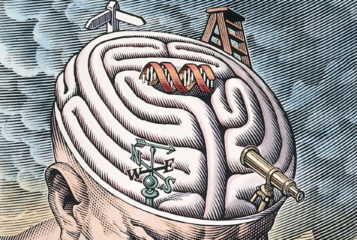A US federal appeals court has upheld a ruling that Sequenom's prenatal MaterniT21 test is not sufficiently 'inventive' to be patentable.
Although the court agreed with the importance of Sequenom's science and that the MaterniT21 test was the first marketed non-invasive prenatal diagnostic test for fetal abnormalities such as Down's syndrome, it disagreed that it had done anything more than use traditional methods to consider a natural phenomenon. On this basis, there was nothing legally which could be patented.
Following previous landmark decisions, US patent courts must follow a two-step process when considering whether a 'discovery' is sufficient to be patented.
The first step is to decide if the subject of the patent is a mere discovery of natural phenomena (non-patentable) or an abstract idea arising out of a discovery (patentable). The second step is to consider whether there has been an 'inventive concept' which has transformed the abstract idea into a patentable invention.
The MaterniT21 test (reported in BioNews 630) uses Sequenom's discovery that the blood of expectant mothers contains paternally inherited cell-free fetal DNA (cffDNA) from the fetus. This was held to be a 'natural phenomenon' for step one of the legal test and thus non-patentable, even though Sequenom's discovery used parts of maternal blood samples that would traditionally have been discarded.
Moreover, the methods used for testing the cffDNA were described by the Court as being 'well-understood, conventional and routine' and thus not sufficiently 'inventive' to gain patent protection.
Critics of the decision have commented that the decision makes almost all biotechnology discoveries non-patentable. Professor Jeffrey Lefstin of University of Iowa College of Law argues in a blog that the court's approach means 'most biotechnology processes are patent-ineligible, because they consist of the conventional steps of transferring drops of fluid from one tube to another.'
Indeed, one of the three judges hearing the case, Circuit Judge Richard Linn, was also scathing about the result, stating that he agreed with the decision reached by the other judges 'only because I am bound by the sweeping language of the test set out in Mayo'. He added that the court decision resulted in 'excluding a meritorious invention from the patent protection it deserves and should have been entitled to retain.'
Dr Lisa Haile of law firm DLA Piper, told GenomeWeb said the ruling means that 'the door's open for competitors'.
Sequenom has stated that 'as a practical matter, the Company believes that the ruling has little business impact' and pointed to its equivalent patents issued in Europe, Japan, Hong Kong, Canada and Australia.
The company has not ruled out a further appeal.
Sources and References
-
Sequenom Patent Invalidation May Have Ramifications for NIPT Field, Entire MDx Industry
-
Prenatal DNA test patent invalid, U.S. appeals court says
-
Ariosa Diagnostics, Inc. v. Sequenom, Inc. ÔÇô Another Diagnostic Patent Meets its End
-
Ariosa Diagnostics, Inc. v. Sequenom, Inc.
-
Guest Post by Prof. Lefstin: Ariosa v. Sequenom and the Path Ahead for Subject-Matter Eligibility
-
Appeals Court Upholds Invalidity of Sequenom Patent






Leave a Reply
You must be logged in to post a comment.